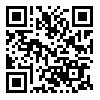BibTeX | RIS | EndNote | Medlars | ProCite | Reference Manager | RefWorks
Send citation to:
URL: http://ph.aui.ac.ir/article-1-317-en.html
The bathrooms were assumed as locations for presence of various classes of society in the past time and walls of baths were decorated with motley tiles and various designs. The human designs drawn on these tiles are deemed as one of the most conspicuous elements that reflect social, cultural, and artistic conditions in community These motifs with various themes and ways of different design had always considered . In order to explore human designs drawn on tile-works at historical baths in Isfahan city and their features it has been dealt with introducing and study on them in this survey and tried to present characteristics of human designs in tile-works of historical baths at Isfahan city through expressing the existing commonalities and differences of human designs on tile- works at bathrooms in Isfahan and other Iranian cities and with analysis on relationship between these designs with portraiture at this era For this purpose, the answers to these questions have been considered: what content and features are Human motifs used in the tile bathrooms in Isfahan? What has changes and what has been the influenced in these designs of the period studied In addition to identifying the characteristics of human motifs such as using of many of the themes of the court and the lack of some concepts such as mythological and athletic themes, the results indicate that direct influence of the school of painting and Qajar paintings, the human pattern of the tile bathrooms Isfahan. The use of human motifs as main subject the painting, tile painting style in tiles, quality and design motifs in the drawing muscles and clothing lines, the effect of the Westernization, the way drawing figures and faces all indicate the artist painter and painting together and influenced tile designs human bathroom tile from painting. This research has been conducted with descriptive – comparative and method of field – library.
| Rights and permissions | |
 |
This work is licensed under a Creative Commons Attribution-NonCommercial 4.0 International License. |





